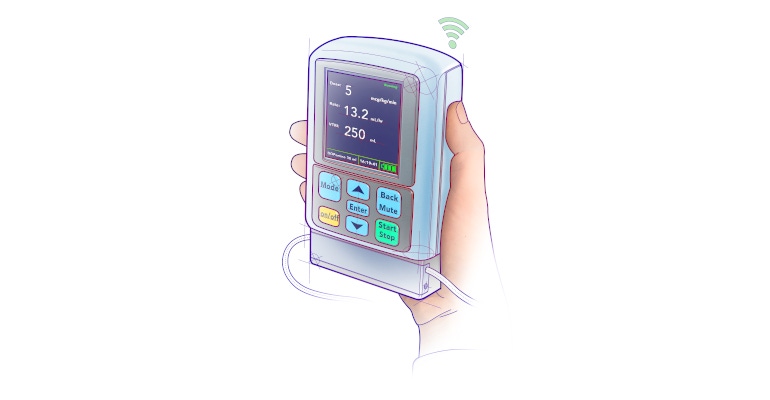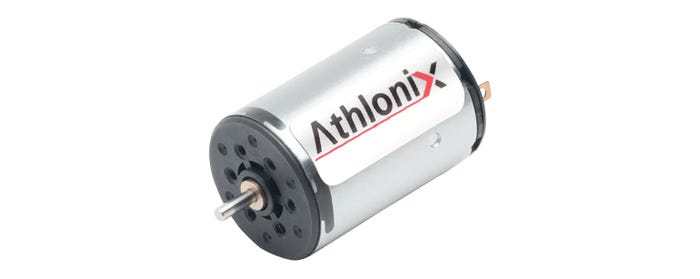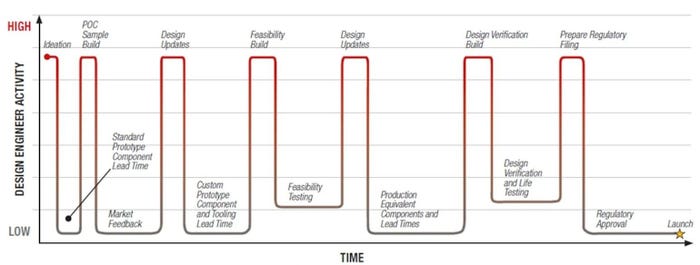How to Build a Better Peristaltic Pump
Select materials and motors carefully and follow these additional tips when building your next peristaltic pump.
August 10, 2023

Because peristaltic pumps can deliver a wide range of fluids, these pumps can be used in several industries. One example, according to Dave Beckstoffer, business development manager at Portescap, is the medical infusion pump, which can use linear or rotary peristaltic drives to deliver medication or nutrition. “The peristaltic motion is driven by a motor to actuate the cam fingers of a linear peristaltic drive or rotate the rollers for a rotary peristaltic drive,” Beckstoffer told Design News, a sister publication to MD+DI.
Such pumps can be improved by selecting materials that could increase efficiency or provide longer life, thereby reducing the power consumption of the pump and allowing it to operate for additional time before maintenance or replacement, he explains further.
We asked Beckstoffer a few more questions to help you build a better peristaltic pump.
How do peristaltic pumps compare with other types of pumps?
Beckstoffer: Peristaltic pumps have advantages and disadvantages over other types of pumps, diaphragm being one example. Peristaltic pumps can handle a wide range of fluids and viscosities based on the utilization of positive displacement. As the tube diameter can be varied, it provides design options based on the application requirements. A drawback is the wear on the tube over time, causing fatigue that can impact flow rate or require replacement.
Why do engineers select peristaltic pumps, and do they face any challenges in incorporating them into products or systems?
Beckstoffer: Peristaltic pumps, both linear and rotary technologies, allow the engineer to optimize the flow for the device in development. The positive displacement motion is well suited for drug and nutrition delivery, providing a wide range of flow rates for the device. The main challenge is optimization of the size of the pump drive system relative to the overall size of the device. Additional design considerations include the selection of the tube diameter to properly deliver the drug or nutrient and the minimization of wear over time to ensure proper delivery for the life of the device.
How critical is motor selection to the function of such pumps?
Beckstoffer: Motor selection is a critical aspect for the function of a peristaltic pump. As the motor drives the linear or rotary peristaltic motion, proper selection of motor technology and performance sizing will ensure optimal pump operation. The motor must accommodate the speed and torque profile of the peristaltic pump, handling the peak torques at the roller position maximums while providing smooth operation between roller positions. If the pump is operated from a battery, motor efficiency is a primary consideration to ensure long operation between battery charges or replacement.
Are speed and torque control issues in pump function, and how can they be better optimized?
Beckstoffer: Speed and torque control will depend on the type of motor technology selected—DC, brushless DC (BLDC), or stepper. For speed control, DC will be controlled using pulse width modulation (PWM) to vary the voltage to achieve the desired speed during delivery. BLDC control is achieved via the electronics using hall sensors for speed control. Steppers achieve their speed based on the pulse train input from the control system. All three technologies have methods of optimization that are ideally accomplished via testing on the final system.
Torque output for the motor is based on the selection of diameter and length as well as the power input for operation. The key is ensuring the motor is properly sized to achieve the peak torques while optimizing the power for the primary operation cycles.

Is a more-efficient peristaltic pump needed, and if so, how can it be developed?
Beckstoffer: Efficiency depends on several factors including the motor itself as well as the pump factors (tube diameter, roller diameter, etc.). The coordination of these factors involves the engineers from the pump designer and motor supplier working together to balance out these factors. From a motor perspective, DC and brushless DC technologies offer higher efficiency than stepper. Adjustments of the coil winding to match the drive inputs yields the best efficiency during operation.
What are the features and benefits of closed-loop speed capabilities in pumps compared with those of open-loop speed capabilities?
Beckstoffer: Closed-loop speed operation ensures the flow rate desired is maintained during operation as the feedback confirms the actual speed of the delivery. When precision is critical for the delivery, closed-loop operation confirms the proper fluid amount is achieved for a set duration.
Can failsafe or redundant motor systems be incorporated into pumps to protect users and products?
Beckstoffer: Redundant motors are typically not used in pumps for infusion systems, based on the physical space available. The feedback device(s) used in the pumps will ensure safety for the user of the device.
What else can be done to improve the operation of such pumps?
Beckstoffer: Collaboration between the motor and pump design engineers is essential to optimize the operation of the pump. Material selection of the pump components can be reviewed in the concept phase to discuss trade-offs for performance and life.

About the Author(s)
You May Also Like





